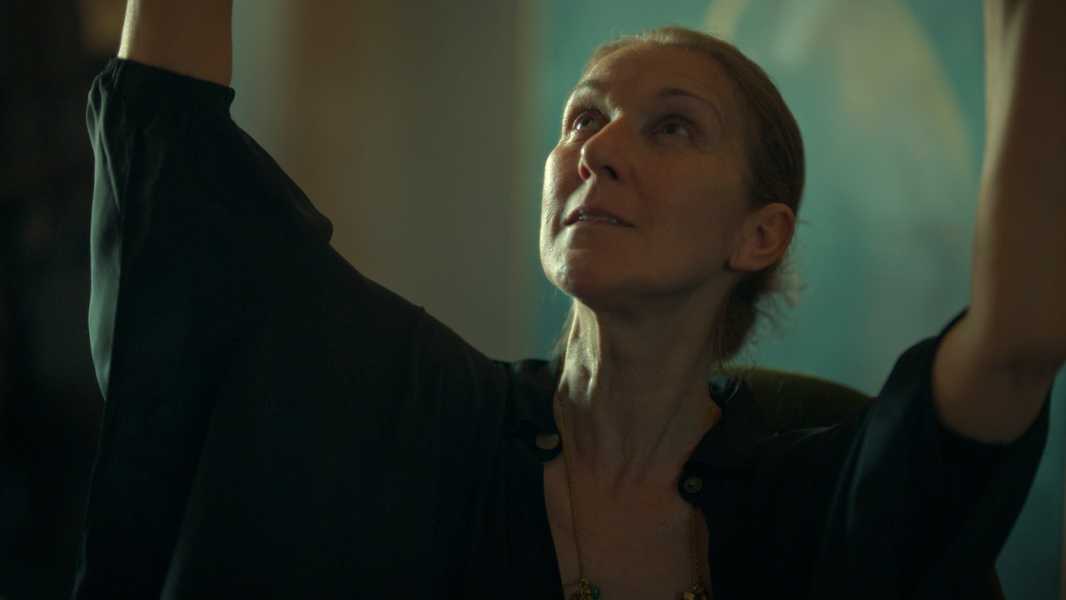
Save this storySave this storySave this storySave this story
On Monday afternoon, a Bombardier BD-700 jet took off from a Las Vegas airport and landed in Paris at 11:11 A.M. Tuesday with Céline Dion inside. Hours later, the Canadian pop superstar was spotted at Le Royal Monceau hotel. “CÉLINE DION MAKES HER ARRIVAL IN PARIS ,” Gala magazine announced, allowing itself to draw the conclusion that Dion would be participating, as rumored, in the Olympics opening ceremony, on Friday. There’s been a sluggish, slightly sour feeling in Paris during the lead-up to the Games, but Dion’s arrival—the opening ceremony to the opening ceremony, one could say—brought a frisson of excitement. Suddenly, it seemed as though things were kicking off.
That same evening, the French President Emmanuel Macron appeared on television for his first interview since the snap legislative elections that he called last month. Unsurprisingly, his interlocutors really wanted to know about Dion. “Will she participate in the ceremony?” one of the presenters asked, in what was probably the liveliest exchange of the entire broadcast. “That would be terrific news,” Macron replied. “Because she’s an immense artist, and I would be immensely happy, like all our countrymen, if she could be at the opening ceremony.” Noting Macron’s teasing use of the conditional tense, the presenter pressed for a confirmation, but the President demurred. “I’m not in charge” of the agenda, Macron said, grinning. “But it would be terrific.”
Viewers of the new documentary “I Am: Celine Dion” know just how terrific it would be. If you’ve heard anything about the film, you’ve probably heard about a scene in which Dion, in the throes of a medical emergency, lies immobilized on a massage table, keening like a wounded animal as a full-body convulsion essentially turns her flesh to stone. Her extremities curl and splay. Her face is a mask of pain from the glabellar lines to the eyeballs, locked in a sideways gaze. Viewers have learned earlier in the film that Dion is suffering from stiff-person syndrome, a little-understood neurological disease that can cause spasms so powerful that they break bones. The physical agony of the moment is compounded by a dramatic irony: episodes such as the one Dion is experiencing can be triggered by sensory stimuli, such as the recording session she has just completed after years of struggling to sing. The scene is horrible, full of bleak symmetries. The Queen of Power Ballads is now the subject of her illness—stricken and isolated, with her famously mellifluous voice emitting involuntary, atonal moans.
Dion is brave to let us see her like this. Her lack of vanity is as unforgettable as her courage. Throughout the film, she appears, puffy and barefaced, in a parade of anti-lewks: saggy T-shirts, scraped-back hair, picked nails. She was once a serious clotheshorse. Now getting dressed up means slinging a Chanel cell-phone purse over a white button-down. Her Las Vegas home is succumbing to the detritus of the unwell—water bottles, stacks of pills. The film, directed with great subtlety by Irene Taylor, doesn’t tell us whether to read Dion’s transformation as a liberation from form or a sign of depression, but a trip to a hangar that houses her archive reminds viewers that it was not always thus. Dion walks lovingly through aisles of garments and accessories, pausing to deliver a monologue about how she can fit into any shoe she loves, no matter its size. “I walk the shoe, the shoe don’t walk me,” she declares, in what has to be the greatest bit of shopping-related cinema since Julia Roberts’s “Pretty Woman” spree. She soon turns to a heavily embroidered jacket in gold brocade, explaining that she had a special shirt made to go under it, permitting the chic of cuffs without the encumbrance of sleeves. “It’s a snap-on, it’s a snap-out, it’s a big zipper . . . and it’s a flap, and it’s a Velcro, but none of that shows,” she says. “None of that shows. And that’s the magic of show business, but, if I may say, I think we did create our own magic.”
Cut to Dion as we once knew her—the fist-pumping, shoulder-shimmying, mike-stand-twirling, air-guitaring, pose-striking diva in a lacquered bouffant and black catsuit, scatting along with the band in a flagrant show of virtuosity. She always had a somewhat goofy physicality and an even goofier personality, parodied to great effect by Ana Gasteyer on “Saturday Night Live” and by Dion herself. (Vice has called her the “patron saint of being weird as hell and loving yourself anyway.”)
In the film, Dion comes across as a true show-biz dork, the musical equivalent of a book lover who will read absolutely anything, down to the label on a shampoo bottle. She is constantly bursting into song at the slightest provocation. At one point, her physical therapist gently chides her for forgetting to apply a cream to her feet. “Give me a break!” she says, and starts belting out the Kit Kat jingle. Another time, she’s explaining the impact that S.P.S. has had on her ability to sing. “When I try to breathe, my lungs are fine. It’s what’s in front of my lungs that’s so rigid,” she says, then attempts a strangled version of Foreigner’s “I Want to Know What Love Is”: I know you can show me. By the end of the line, Dion is weeping. “That’s what happens, and it’s very difficult for me, to hear that, and to show this to you,” she says. We understand that we’re seeing the innards of her soul, the golden jacket flung open.
The scene that grabbed my heart and wouldn’t let it go, even more so than the others, was relatively quiet. “Before I got really hit with S.P.S, my voice was the conductor of my life,” Dion says, matter-of-factly. “I was following it.” In a typical celebrity bildungsroman, this would be a confessional moment when the star acknowledges the totalizing effect of great talent and vows to find out who she is away from the mike. But Dion takes a nostalgic tone. Her husband, René Angélil, died in 2016. Her boys are getting older (although Nelson and Eddy, preadolescent twins, were still young enough to appreciate a milkshake delivered on a literal platter by a butler named Mr. Barrington). Her voice has been her great companion, her lifetime roommate, before it started acting erratically and trashing the place. Dion shakes her head fondly, and the corners of her eyes crinkle up, as though in sweet remembrance.
It was then that it hit me that “I Am: Celine Dion,” which was filmed in the midst of COVID shutdowns, is a pandemic movie, a portrait of a bereft human being struggling to accept an earthshaking new reality. “I think I was very good,” Dion says, speaking of herself in the past tense. “I think I had some stuff that was amazing.” Grief suffuses the atmosphere. “Who’s Céline Dion?” she asks. “Céline Dion is the one who sang, ‘All by myself anymore,’ did the highest note ever, and whatever. She’s the best.” Who’s Céline Dion? She’s the artist whom Céline Dion the person is mourning.
Throughout her career, Dion has faced criticism for being too saccharine, too formulaic, not sophisticated enough or sufficiently in charge of her creative output. Taylor’s film should put these assessments to rest forever. “I Am: Celine Dion” is the most intense portrait of an authentic artist I’ve seen—an “Agony and the Ecstasy” for the adult-contemporary age, a “Mystery of Picasso” set in the sick chambers of a mega-mansion in a Vegas suburb called Marseilles. Dion lives to sing. When she lost her voice, she died. If she does make a comeback on Friday on the Seine, there will be a lot of people cheering, with new respect, for her return to life. ♦
Sourse: newyorker.com






